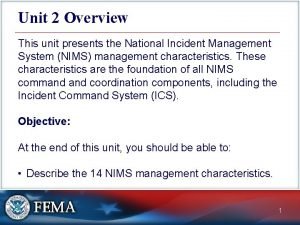Affinity l Depending on the application and client





- Slides: 5

Affinity l Depending on the application and client requirements of your Network Load Balancing cluster, you can be required to select an Affinity setting to control how multiple connections from a single client will be distributed in a load balancing cluster.

Depending on the application and client requirements of your Network Load Balancing cluster, you can be required to select an Affinity setting to control how multiple connections from a single client will be distributed in a load balancing cluster. l By default affinity will be set to single after you install the Network Load Balancing driver. You implement affinity by directing all client requests from the same IP address, or a Class C group of addresses to the same cluster host. l The following table provides a summary of the affinity choices available to you. l

Client Affinity None Action Single Network Load Balancing should direct multiple requests from the same client IP address to the same cluster host. Single affinity is the default setting. Network Load Balancing directs multiple requests from the same TCP/IP Class C address range to the same cluster host. Class C Network Load Balancing does not need to direct multiple requests from the same client to the same cluster host.

l You will base your selection of None, Single, or Class C affinity on the following criteria: – Select None (no affinity) when you can distribute the client connections to any cluster member; for example, when load balancing a simple Hypertext Markup Language (HTML) based Web site or a virtual private network (VPN) server, all of the client connections can go to any cluster member. – Select Single affinity where the same cluster host must service all connection requests from a single client, for example the same host must handle Hypertext Transfer Protocol (HTTP) connections and Hypertext Transfer Protocol Secure (HTTPS) connections from a client. – Select Class C affinity where client connections can appear to come from different IP source addresses; for example when the Network Load Balancing cluster is isolated from the clients by a proxy array, Class C affinity would be the appropriate choice for the clustered environment. If you do not need this capability, select the Single affinity option instead to maximize scaled performance when using client affinity.

l When making a decision to enable or disable client affinity use the following criteria: – Enabling either Single or Class C affinity ensures that only one cluster host handles all of the connections that are part of the same client session. Traffic handling by a single host is essential if the server program running on the cluster host maintains session state (such as server cookies) between connections. – Disabling client affinity improves performance in a load balancing cluster because it allows different cluster hosts to concurrently handle multiple connections from the same client. To maximize scaled performance, disable client affinity (by using the None option) when it is not needed.









